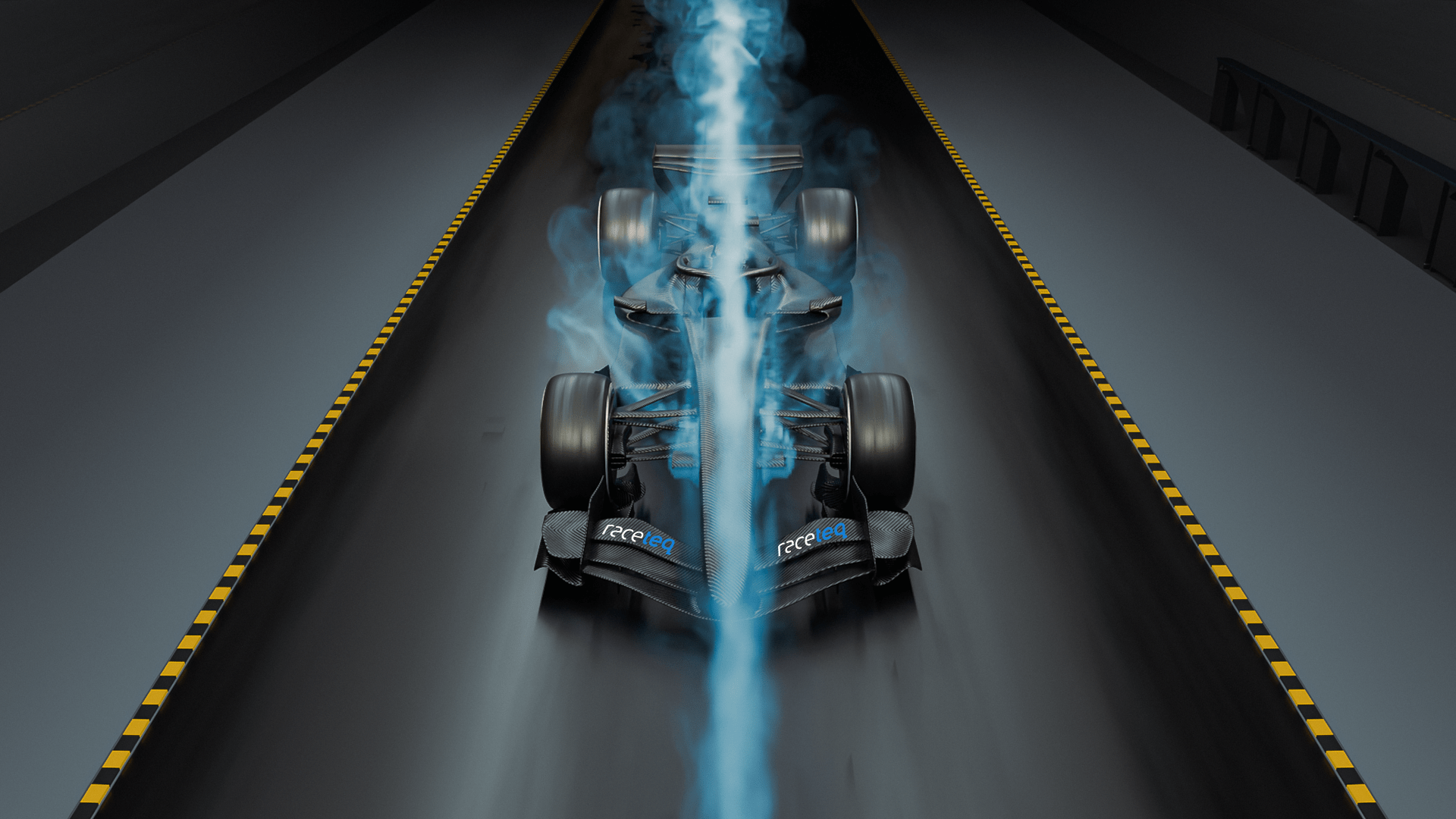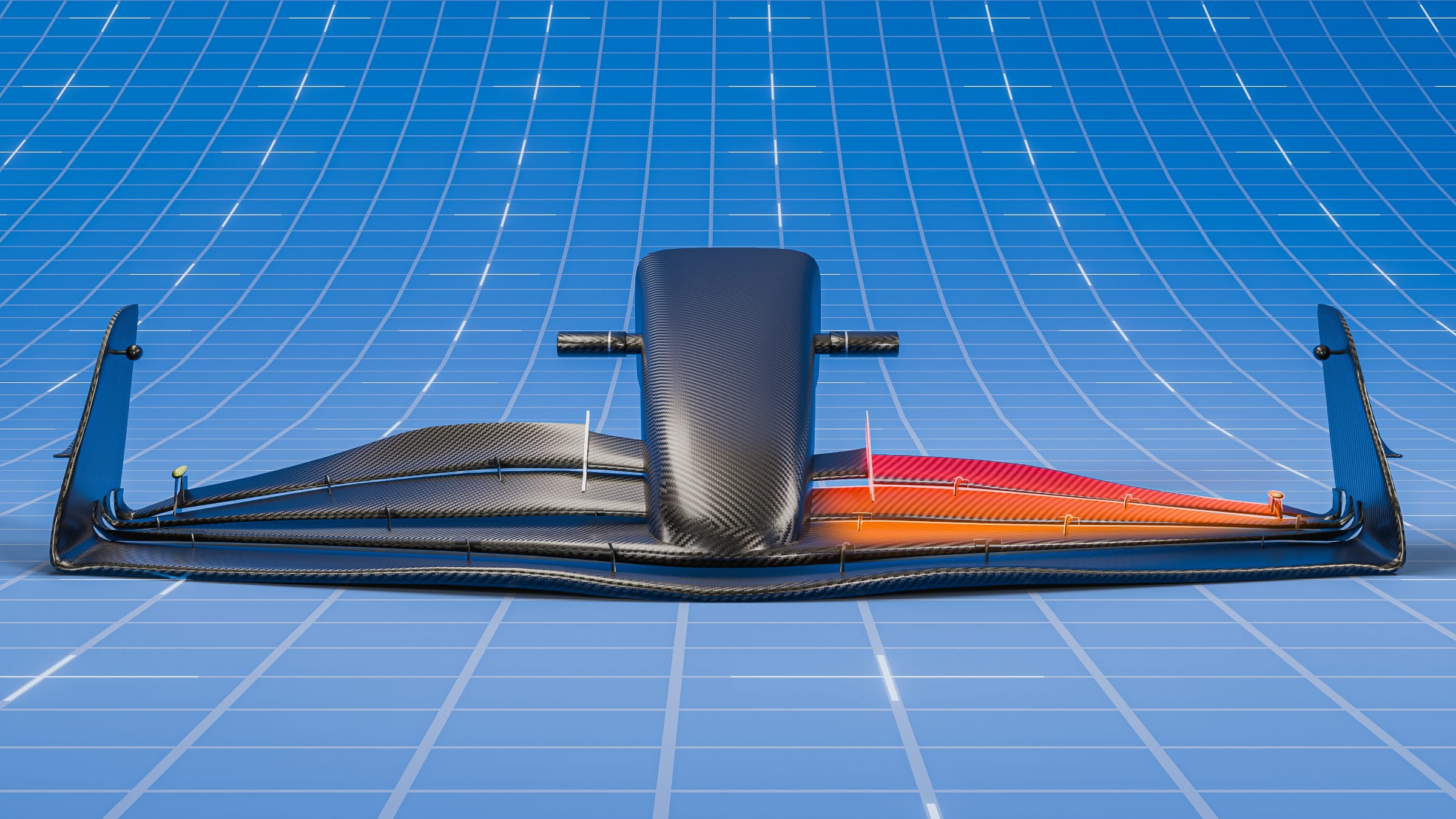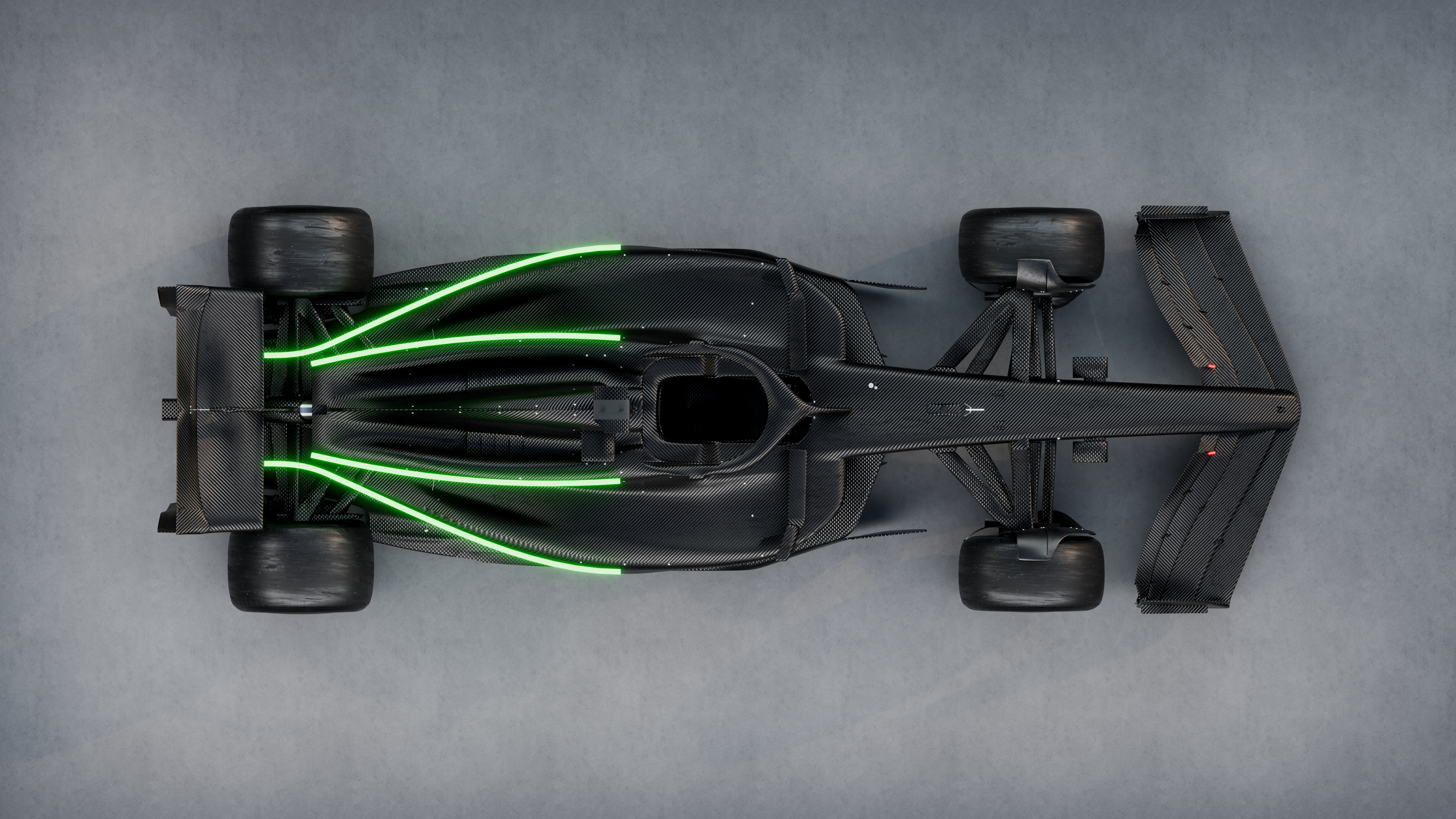Car
What’s the difference between slipstream and dirty air?
by Rohan Badiger
11min read
.jpg?cx=0.5&cy=0.5)
Slipstream and dirty air are two crucial and contrasting aerodynamic phenomena that dictate the performance of racing cars running in close proximity - but why is one detrimental and the other beneficial?
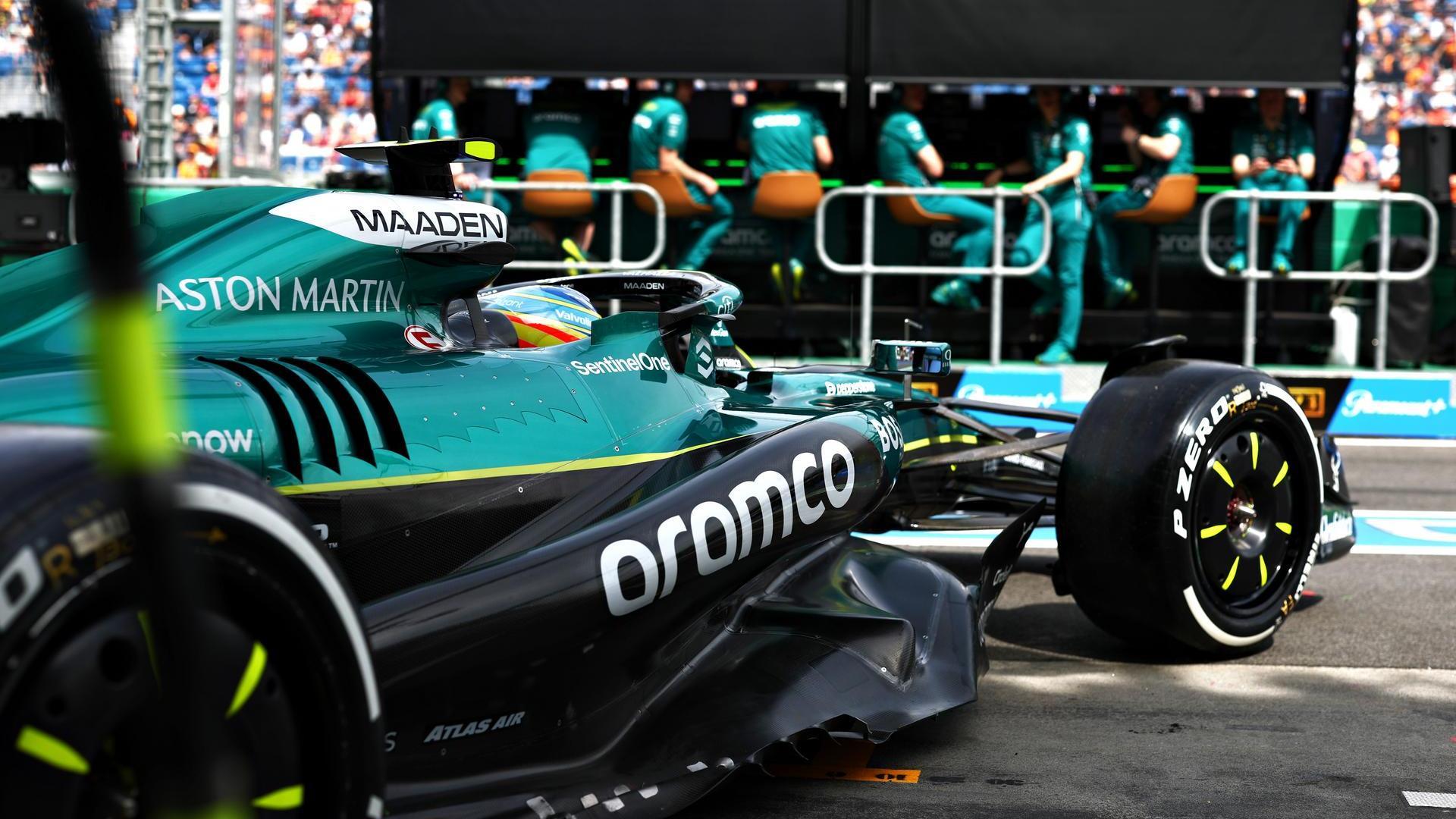
Sign up for a newsletter and we'll make sure you're fully up-to-date in the world of race technology
While slipstreaming can provide a boost in straight-line sections of a track, dirty air poses a problem for drivers attempting to maintain pace in corners.
What is slipstream?
As any car moves through the air, it displaces the surrounding air particles, generating zones of high pressure at the front of the car and lower-pressure air behind the car.This area of reduced pressure and disturbed air trailing behind the car is known as the wake.
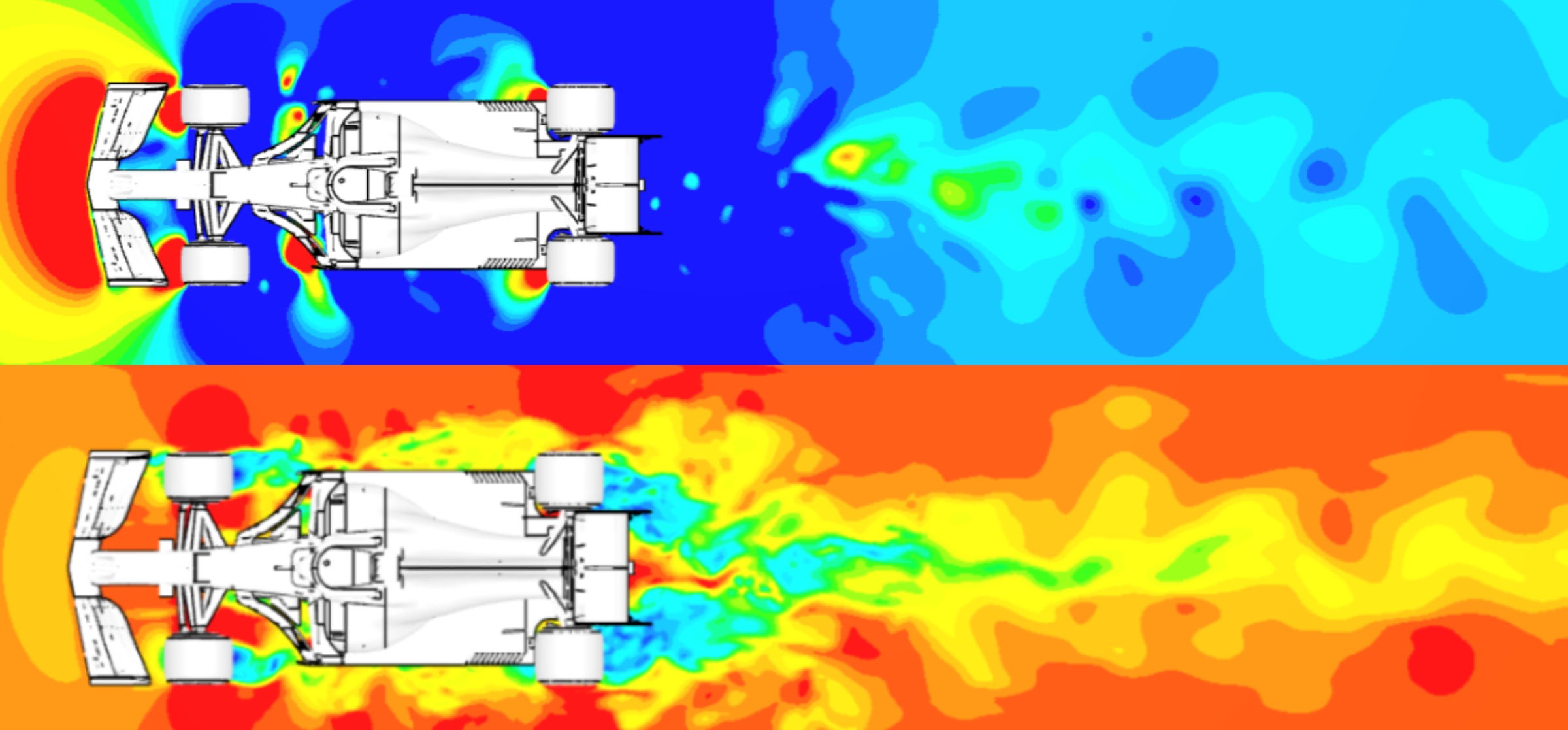
Comparison visualising pressure (top) behind a car with blue regions being low pressure zones and red zones being high-pressure zones. Below is the velocity profile behind a car with red regions being low-velocity zones and blue zones being high-velocity zones.
- Increased straight-line speed: Less drag means the following car accelerates more efficiently and can achieve higher top speed.
- Fuel and energy savings: Reduced aerodynamic load translates to lower demand on the power unit, which makes a difference in long races where pitstops are common, or in scenarios where a driver is saving fuel.
- Tyre conservation: Lower drag means the car requires less throttle input to maintain speed, helping to reduce heat and wear on tyres over long stints.
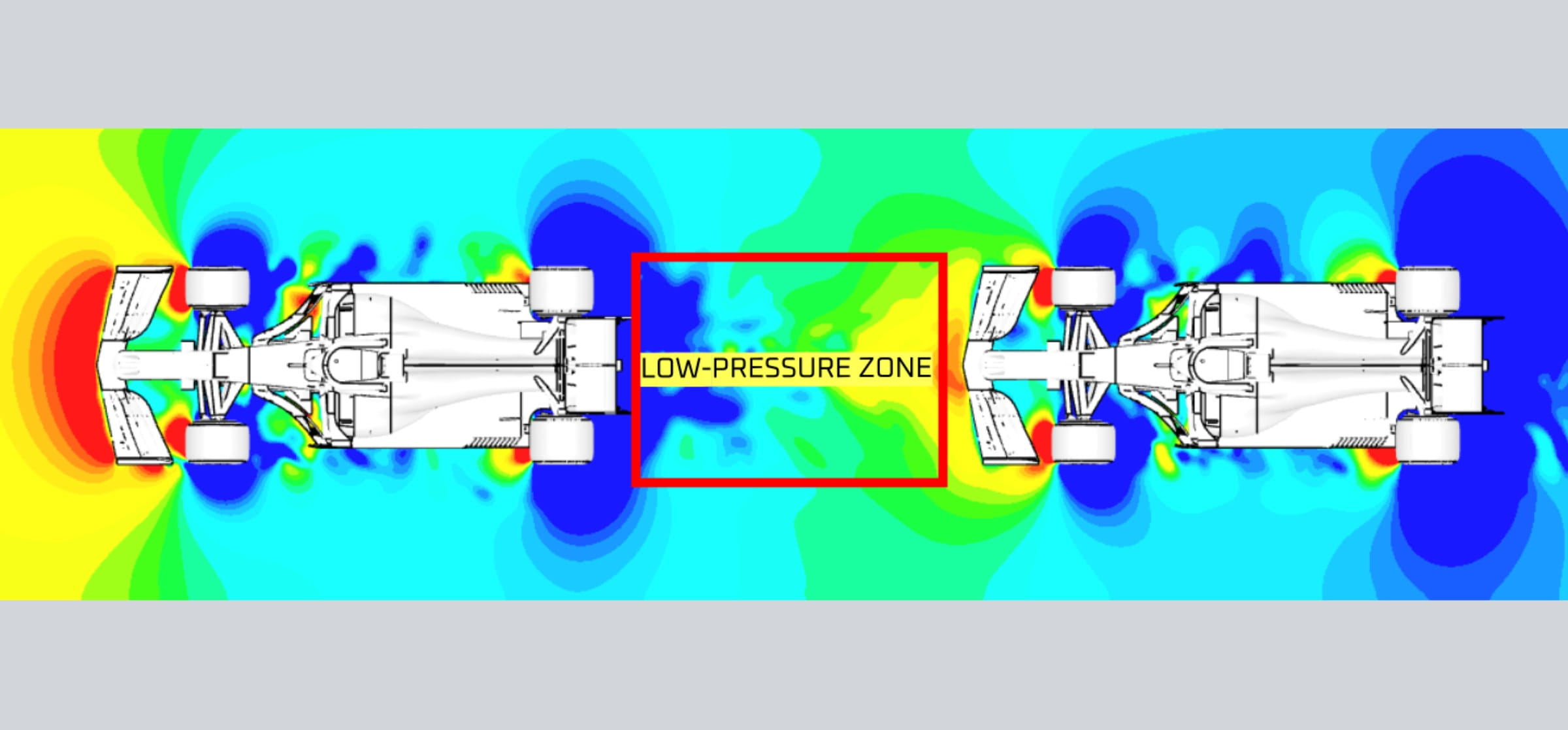
Illustration showing the trail of low-pressure zone behind the lead car, aiding the trailing car
Data showing the power to overcome drag in free air compared to doing so in slipstream at 200 km/h, using a generic F1-style single-seater model
| Distance (in car lengths) | Power Required (hp) | Fuel Consumed (grammes) | Drag Force (kg) | |
| 0.25 | 45 | 15 | 139 | |
| 0.5 | 54 | 18 | 161 | |
| 1 | 68 | 23 | 184 | |
| 2 | 90 | 30 | 200 | |
| Free Stream | 118 | 39 | 233 |
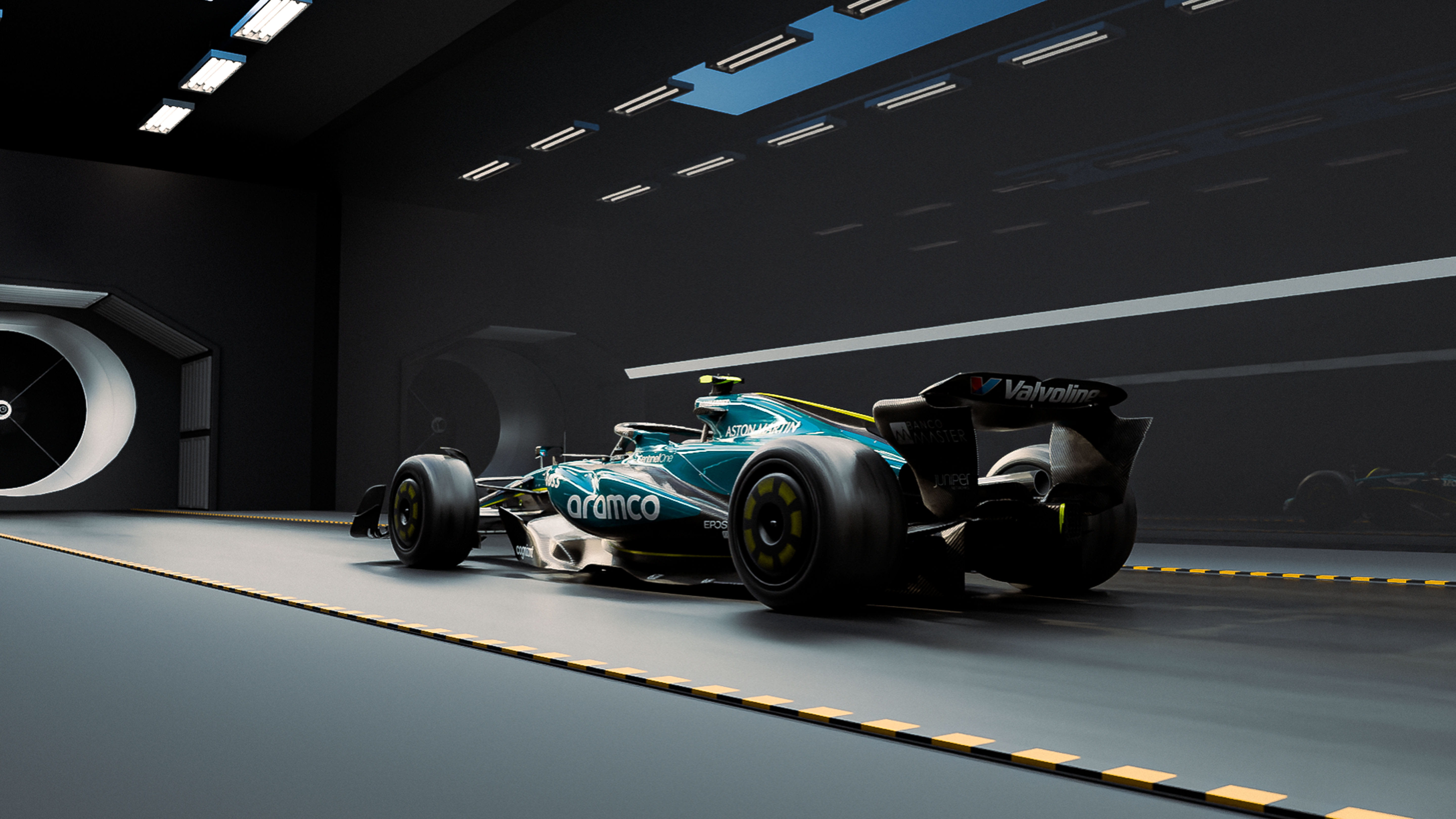
Car, Innovation
Motorsport aerodynamics explained: the role of wings, stalling and diffusers
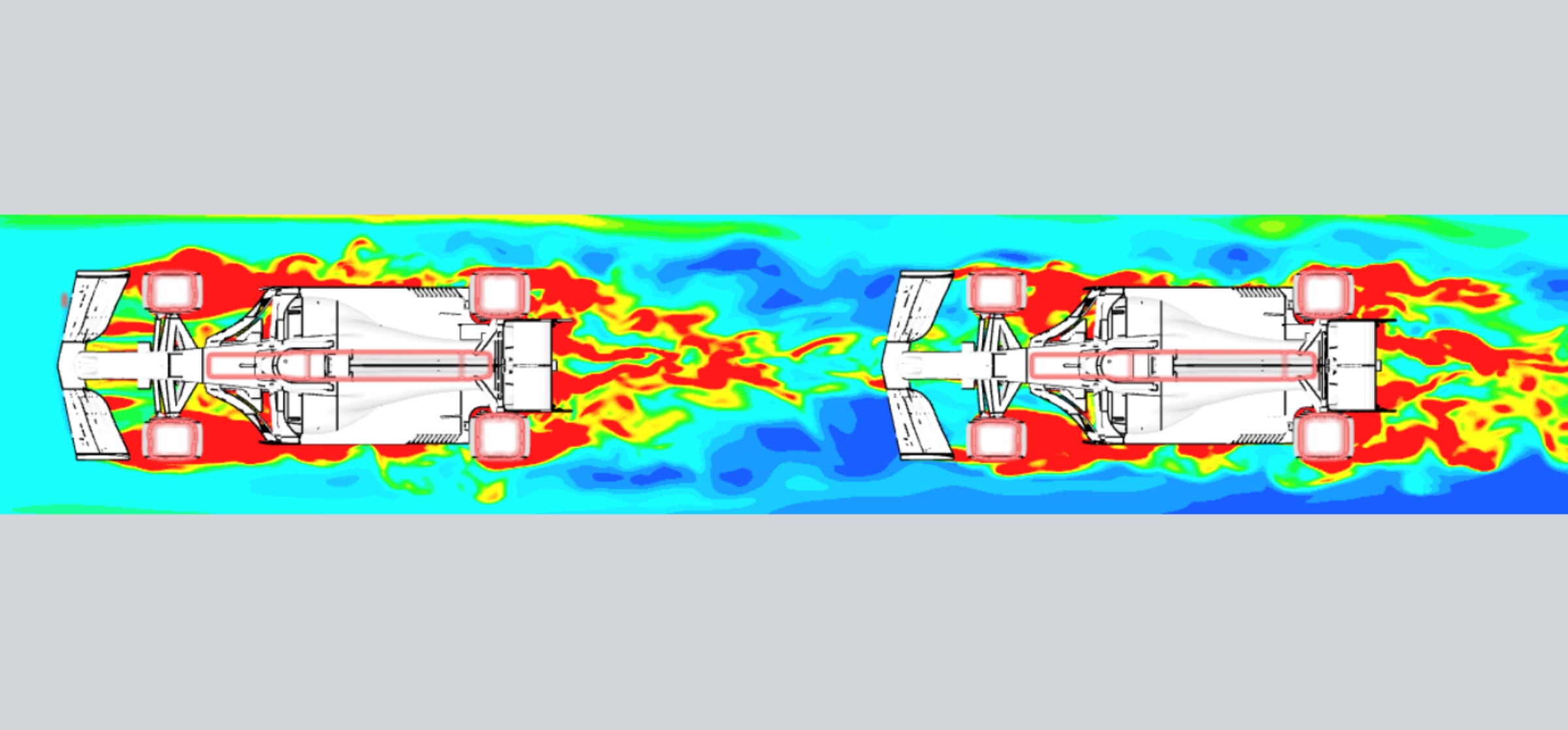
Illustration showing the increased turbulence faced by a following car
What is dirty air, and why is it a negative phenomenon?
While slipstreaming offers clear advantages on straights, the aerodynamic landscape shifts dramatically in corners.
The turbulent airflow left in the wake of a leading car - often referred to as dirty air - can significantly hinder the performance of the car behind.
Race cars rely on carefully managed airflow to generate downforce through components such as front wings, rear wings, diffusers, splitters, and underfloors. These surfaces are designed to function best in clean, undisturbed air.
When a car enters the turbulent wake of another, several negative effects occur:
- Reduced downforce: The disrupted airflow prevents aerodynamic surfaces from functioning optimally, reducing the grip available to the trailing car.
- Understeer and oversteer: A loss of front downforce leads to understeer—where the car resists turning. Rear instability can also arise due to a loss of rear-end grip.
- Increased tyre degradation: The car slides more through corners, increasing heat generation and wear on the tyres.
- Driver fatigue and discomfort: In certain categories, prolonged exposure to turbulent air can even affect visibility and cockpit airflow.
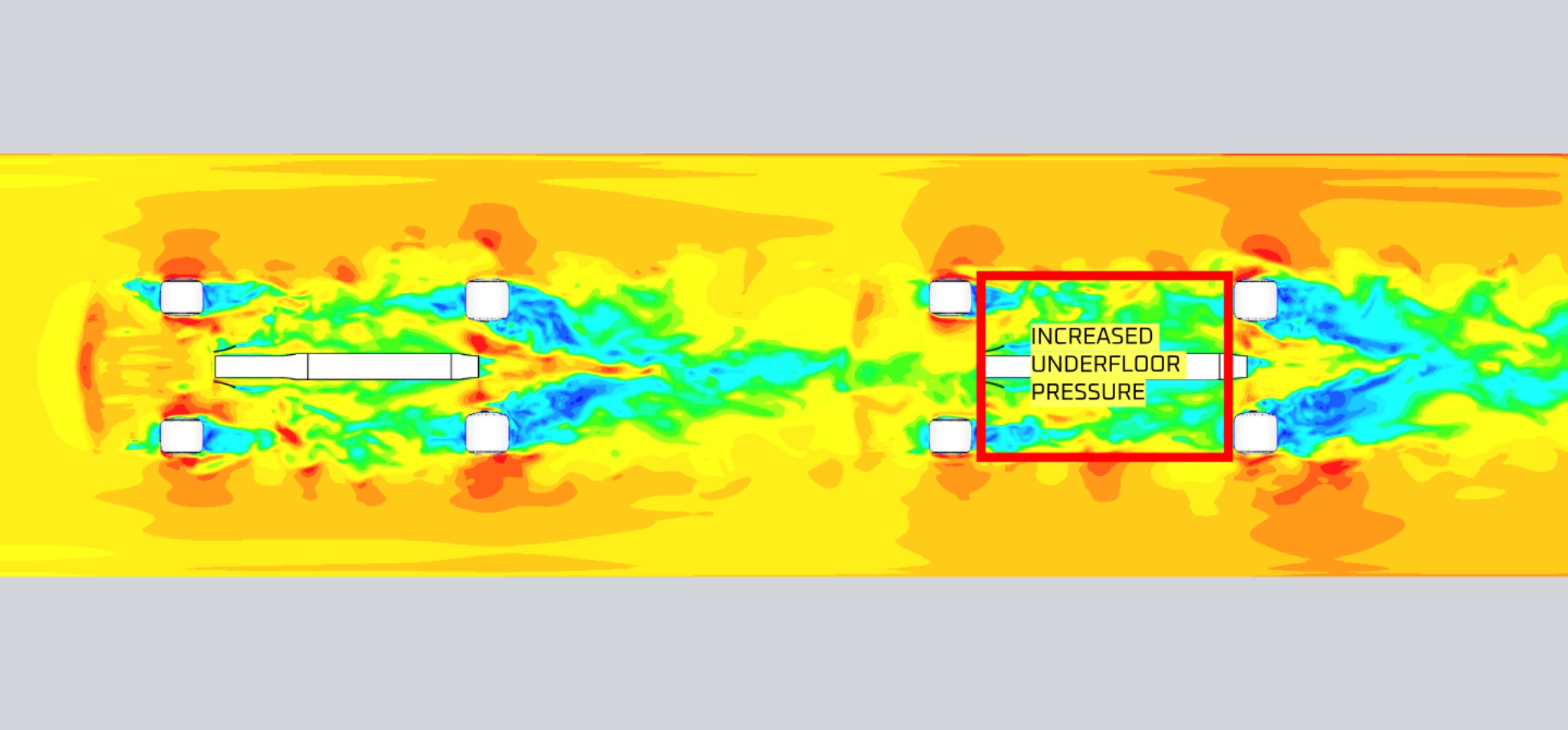
Illustration showing the effect of wake, increasing pressure through the underfloor of the following car and reducing downforce generated by that part
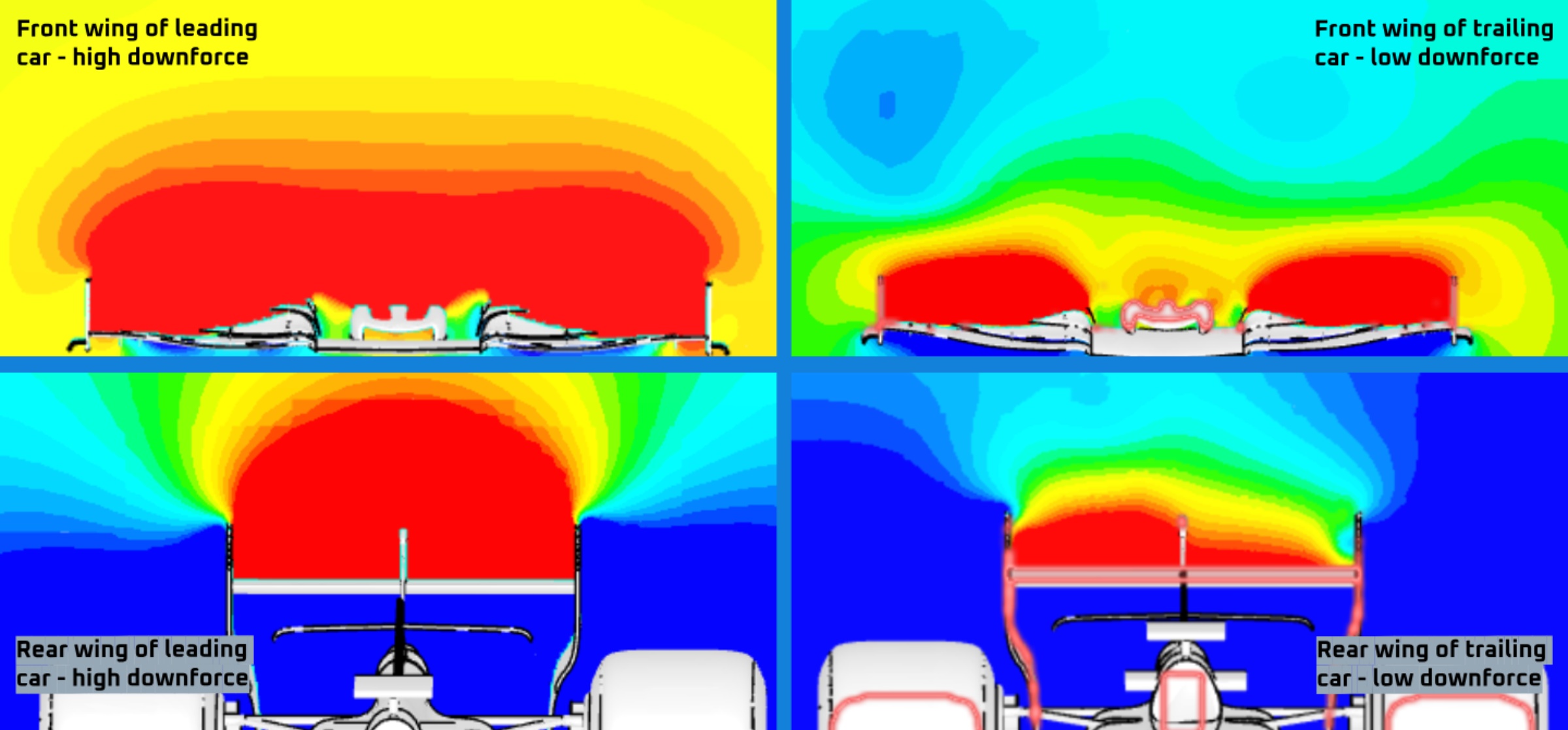
Diagram showing downforce differences between the leading car (L) and the trailing car (R)
Managing the balance between slipstream and dirty air
The contrast between the beneficial slipstream and the detrimental dirty air forces teams and drivers into a constant strategic balancing act. The decision of when to follow closely and when to back off is shaped by:
- Track layout: Tracks with long straights and heavy braking zones reward slipstreaming, while tight, technical circuits punish extended exposure to dirty air.
- Tyre strategy: Preserving tyres may require maintaining a slightly greater distance through corners, then closing the gap on straights.
- Increased tyre degradation: The car slides more through corners, increasing heat generation and wear on the tyres.
- Car design: Vehicles with greater mechanical grip are more resistant to the effects of dirty air, whereas cars that heavily rely on aerodynamic grip (e.g., single-seaters) are more susceptible.
In multi-class racing - such as the World Endurance Championship or IMSA - drivers must also contend with dirty air from cars in other categories, making traffic navigation a critical skill.
In championships such as F1, when a car comes across a backmarker that is being lapped, that dirty air presents a similar problem.
Data showing the reduction in downforce levels between a trailing car and leading car, using a generic F1-style single-seater model
| Distance (in car lengths) |
Downforce on the Car (kg) |
Effective Weight of the Car |
| 0.25 | 260 | x1.33 |
| 0.5 | 310 | x1.39 |
| 1 | 390 | x1.49 |
| 2 | 520 | x1.65 |
| Free Stream | 680 | x1.85 |
